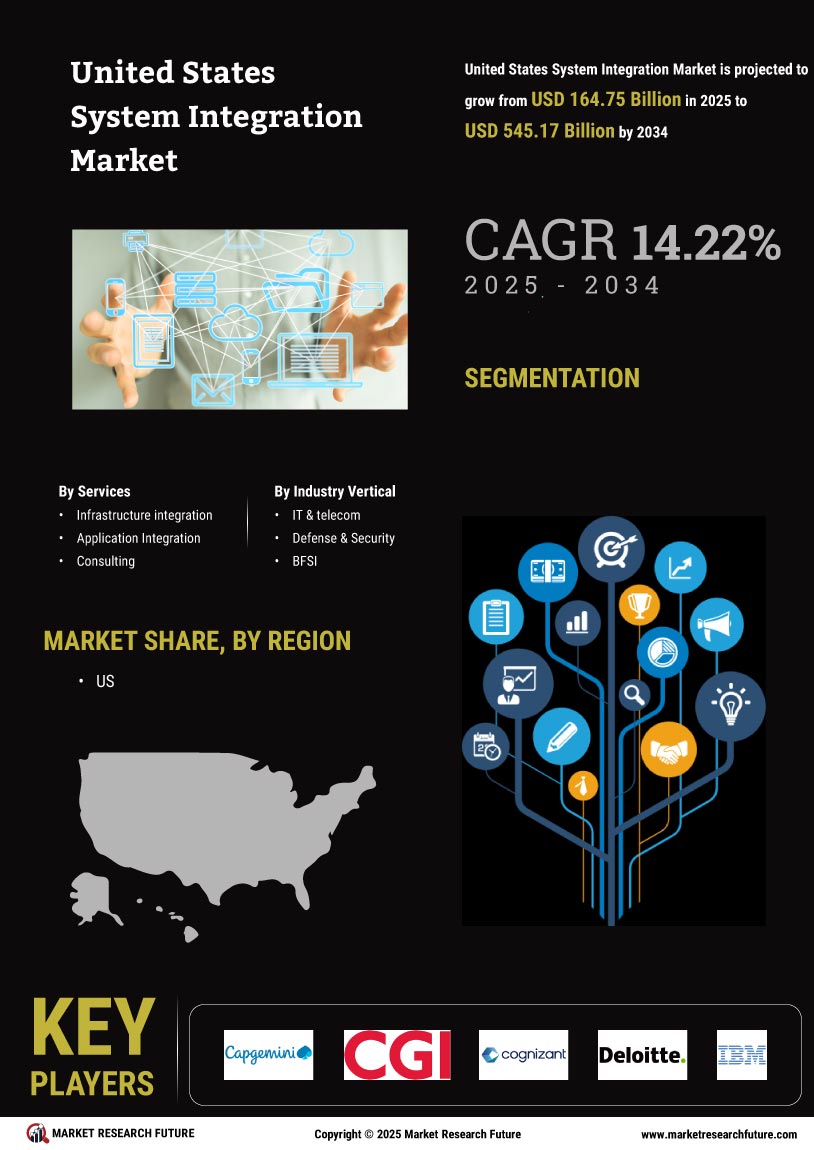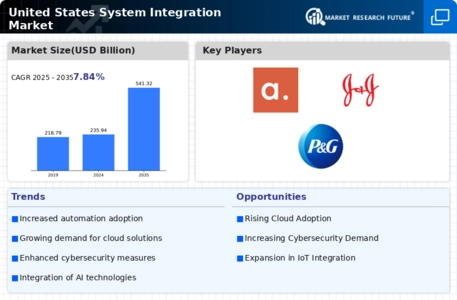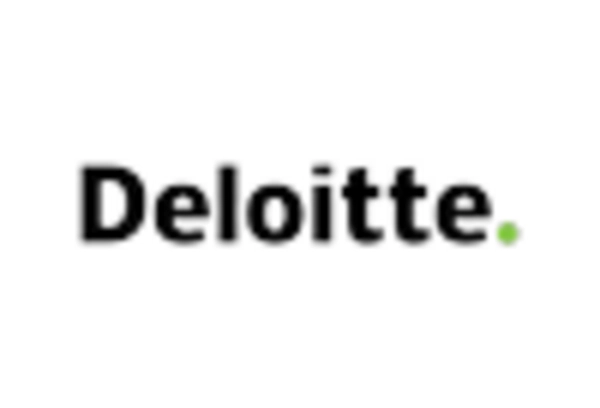Increased Focus on Data Analytics
In the United States System Integration Market, there is a pronounced emphasis on leveraging data analytics to drive business decisions. Organizations are increasingly investing in systems that can integrate and analyze vast amounts of data from disparate sources. This trend is fueled by the recognition that data-driven insights can lead to enhanced operational efficiency and strategic advantages. The market for data analytics solutions is expected to witness significant growth, with estimates suggesting a compound annual growth rate that reflects the increasing reliance on data for decision-making. As companies strive to harness the power of data, the demand for effective system integration solutions that facilitate data flow and accessibility is likely to rise.
Regulatory Compliance and Standards
The United States System Integration Market is significantly influenced by the need for regulatory compliance and adherence to industry standards. Organizations are compelled to integrate systems that not only meet operational requirements but also comply with various regulations, such as data protection and privacy laws. This necessity drives investments in system integration solutions that can ensure compliance while maintaining operational efficiency. The market landscape is shaped by the evolving regulatory environment, which necessitates continuous updates and adaptations in integrated systems. As compliance becomes increasingly complex, the demand for specialized integration services that can navigate these challenges is expected to grow.
Emergence of Internet of Things (IoT)
The emergence of the Internet of Things (IoT) is reshaping the United States System Integration Market, as organizations seek to connect a multitude of devices and systems. The proliferation of IoT devices necessitates robust integration solutions that can manage the vast amounts of data generated and ensure seamless communication between devices. This trend is indicative of a broader shift towards smart environments, where interconnected systems enhance operational efficiency and user experiences. The market for IoT integration solutions is anticipated to expand significantly, driven by the increasing adoption of smart technologies across various sectors, including manufacturing, healthcare, and transportation.
Growing Demand for Digital Transformation
The United States System Integration Market is experiencing a notable surge in demand for digital transformation initiatives. Organizations across various sectors are increasingly recognizing the necessity to modernize their operations and enhance customer experiences through technology. This shift is driven by the need for improved efficiency, agility, and competitiveness in a rapidly evolving marketplace. According to recent data, the market for digital transformation solutions is projected to reach substantial figures, indicating a robust growth trajectory. As businesses seek to integrate advanced technologies such as artificial intelligence and machine learning, the role of system integration becomes pivotal in ensuring seamless connectivity and interoperability among diverse systems.
Advancements in Artificial Intelligence and Machine Learning
Advancements in artificial intelligence (AI) and machine learning (ML) are profoundly impacting the United States System Integration Market. Organizations are increasingly integrating AI and ML capabilities into their systems to automate processes, enhance decision-making, and improve customer interactions. This trend is indicative of a broader movement towards intelligent systems that can adapt and learn from data. The market for AI-driven integration solutions is projected to grow, reflecting the increasing demand for systems that can leverage these technologies to optimize performance. As businesses recognize the potential of AI and ML in driving innovation, the role of system integration in facilitating these advancements becomes increasingly critical.


















Leave a Comment